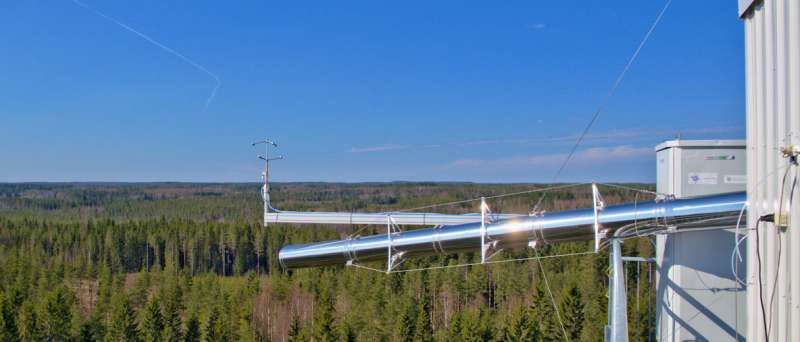Global network of 1000 stations needed to build an Earth observatory

Environmental challenges, climate change, water and food security and urban air pollution are all interlinked, yet each is studied separately. This is not a sustainable situation, for anybody anymore. To tackle this, professor Markku Kulmala calls for a continuous, comprehensive monitoring of interactions between the planet's surface and atmosphere in his article "Build a global Earth observatory," published in Nature, January 4, 2018.
In his article, he refers to his long experience of collecting environmental data. He has built a station called SMEAR II (Station for Measuring Ecosystem-Atmosphere Relationships, www.atm.helsinki.fi/SMEAR/), in the boreal forests of Finland showing how a rounded set of environmental measurements can be obtained.
The report calls for a global Earth observatory consisting of 1,000 or more well-equipped ground stations around the world that track environments and key ecosystems fully and continuously. Data from these stations would be linked to data from satellite-based remote sensing, laboratory experiments and computer models accordingly.
"Incomplete coverage from ground stations is the main limit to observations of Earth's conditions. Satellites can continuously monitor compounds such as CO2, ozone and aerosols, almost planet-wide. But they cannot resolve processes or fluxes, or trace the hundreds more compounds of interest. Satellite data must be 'ground-truthed'," professor Kulmala says.
This global observatory of 1,000 super-stations needs to be established soon, within 10 to 15 years. "The costs would be around €10 million (US$11.8 million) to €20 million per station, which can be compared to the building costs of the Large Hadron Collider at CERN, Geneva, Switzerland, or that of US President Donald Trump's proposed Mexican wall."
Nevertheless, a shift in how environmental data are collected and disseminated is needed, he says. "There is a scientific interest, as well, in this data," professor Markku Kulmala says, "the researchers could find new mechanisms and feedback loops in this coherent data set."
More information: Markku Kulmala. Build a global Earth observatory, Nature (2018). DOI: 10.1038/d41586-017-08967-y
Journal information: Nature
Provided by University of Helsinki




















